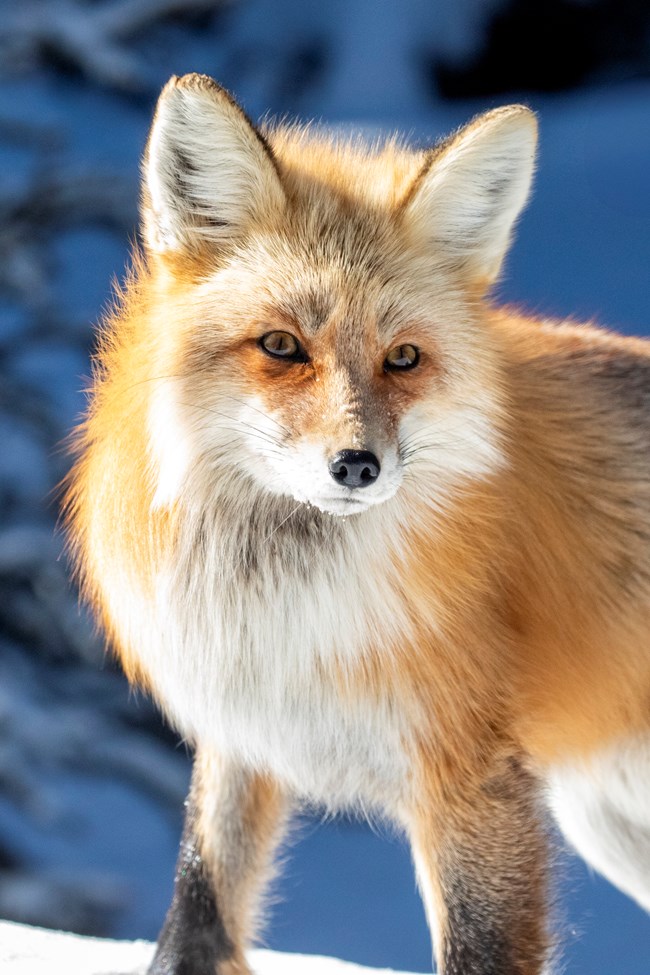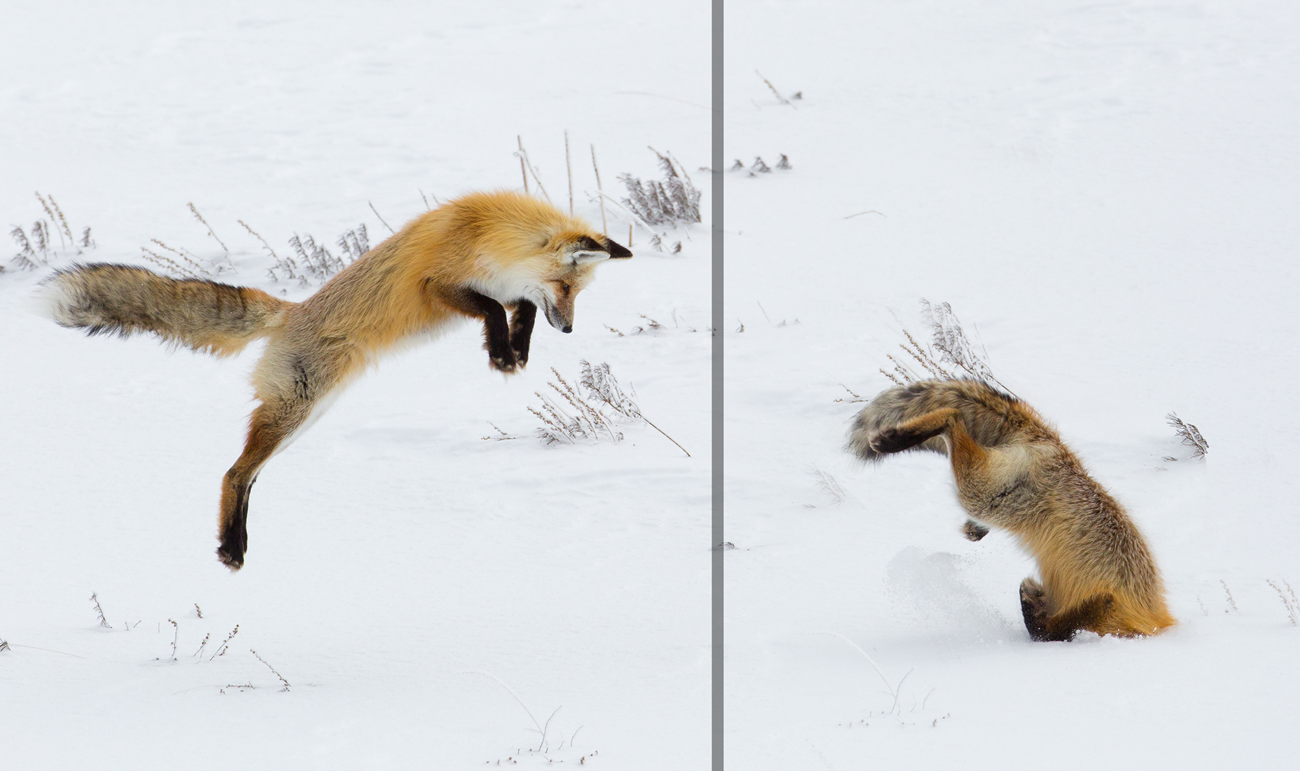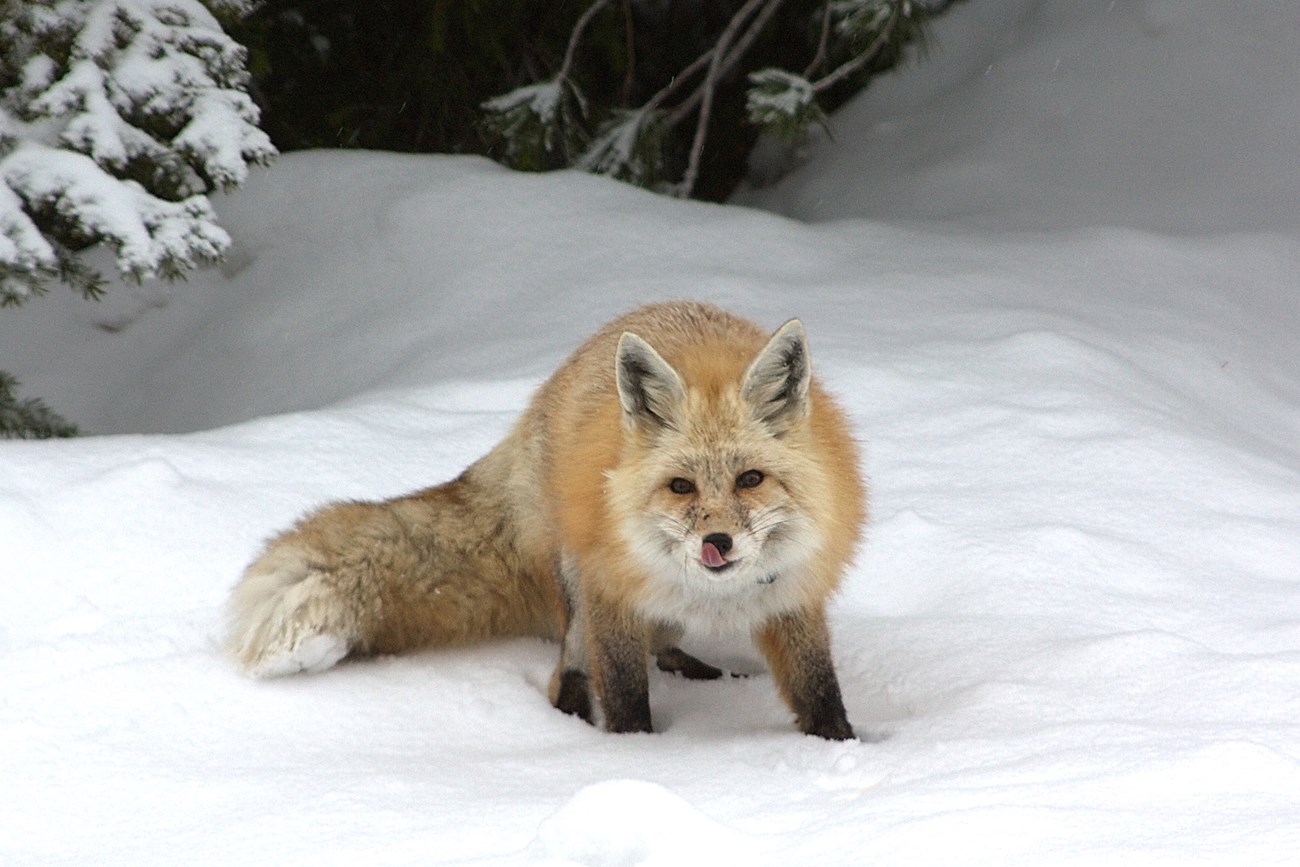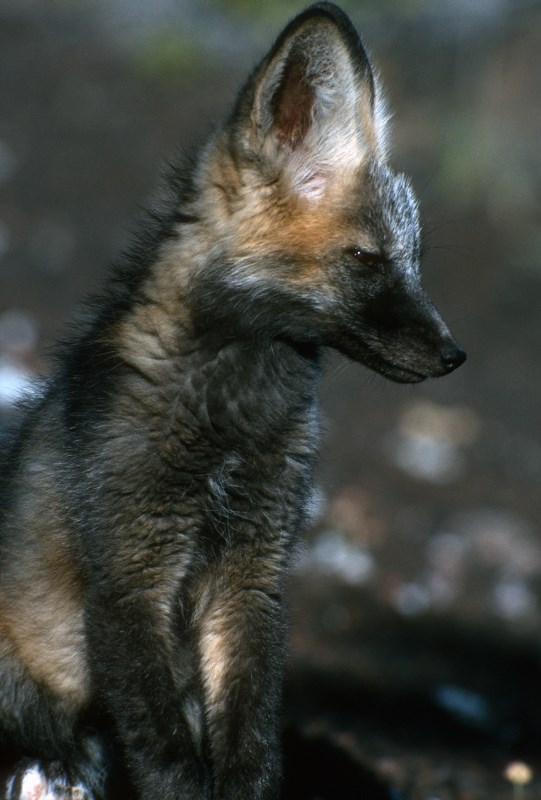Last updated: August 22, 2025
Article
The Clever Red Fox

NPS / Ashton Hooker
Red foxes are legendary for their intelligence and adaptability, thriving everywhere from wilderness areas to suburban neighborhoods. They have the largest distribution of any land mammal except humans, making them one of nature's most successful species.
Despite their reputation, red foxes are much smaller than most people expect. Male foxes (called "dogs") average around 11 pounds, while females ("vixens") weigh about 9 pounds. To put this in perspective, many house cats are actually heavier than these wild predators.

NPS / Neal Herbert
An Unexpected American Story
The history of red foxes in North America reveals an interesting twist. Before European colonization, red foxes were native only to boreal and mountain regions of North America. They didn't become common along the East Coast until the mid-1800s.
The reason? European aristocrats imported red foxes for hunting because the native gray foxes weren't "sporting" enough - they would climb trees to escape the hunting hounds! These European imports, combined with native foxes expanding into cleared farmland, created today's East Coast red fox population.
Serious Animal Magnetism
Red foxes possess perhaps the most remarkable hunting ability in the animal kingdom. Their hearing surpasses nearly all mammals, capable of detecting high-frequency mouse squeaks and low-frequency gnawing sounds under several feet of snow from 100 feet away.
But their hunting gets even more incredible. Czech scientists discovered that red foxes use Earth's magnetic field for precision hunting. When leaping toward the northeast (aligned with magnetic north), foxes successfully catch prey 73% of the time. Jumps in other directions succeed only 18% of the time. This makes red foxes the first known predator to use magnetoreception for enhanced hunting success.

NPS / Kevin Bacher
A Night Sight that Shines Bright
Red foxes have evolved remarkable eye adaptations for hunting in various light conditions. Their bright amber eyes feature vertical pupils that can close more tightly than round pupils, allowing precise light regulation. This enables them to hunt effectively from bright snow-covered days to pitch-black nights.
Their true advantage lies in a reflective layer behind the retina called the tapetum lucidum ("bright tapestry" in Latin). This biological mirror reflects light back through the eye, essentially doubling available light while maintaining image sharpness. This same adaptation creates the characteristic eyeshine when foxes are caught in headlights or flashlight beams.
The Sixth Scentse
Red foxes maintain complex social structures through scent marking - a sophisticated chemical communication system. Both males and females strategically deposit urine and scat on prominent landmarks like stumps, rocks, and trail intersections.
During February mating season, male fox urine develops an intensely musky, skunk-like odor composed largely of volatile sulfur compounds. These chemical "signposts" convey detailed information about the fox's gender, social status, and individual identity to other foxes in the area.
Scent marking frequency varies dramatically based on territory quality. In productive hunting areas, foxes may mark up to 70 times per hour, while poor territories receive little marking attention and may even be shared with other foxes.
Red foxes demonstrate that success in nature often comes from a combination of intelligence, adaptability, and remarkable specialized abilities that continue to surprise scientists.

NPS Photo
Not Always Red
More Than Just Red While most red foxes sport the classic red coat with black legs and white markings, their coloration is surprisingly diverse. In colder climates, foxes develop darker, thicker winter coats. Some fascinating color variations include: Cross foxes with black faces and distinctive dark stripes across their backs Completely black foxes (melanistic) Silver foxes with black coats tipped in silver guard hairs This incredible variation has led scientists to classify red foxes into 45 different subspecies worldwide, each adapted to their specific environment.For more information
- Watch a red fox take flying leaps as it hunts for meadow voles in deep snow.- Read about red fox positive and negative effects on native biodiversity in this 2020 Rutgers research paper.
Tags
- acadia national park
- appalachian national scenic trail
- boston harbor islands national recreation area
- eleanor roosevelt national historic site
- home of franklin d roosevelt national historic site
- marsh - billings - rockefeller national historical park
- minute man national historical park
- morristown national historical park
- saint-gaudens national historical park
- saratoga national historical park
- saugus iron works national historic site
- vanderbilt mansion national historic site
- weir farm national historical park
- science
- red fox
- magnetometry
- fox
- wildlife
